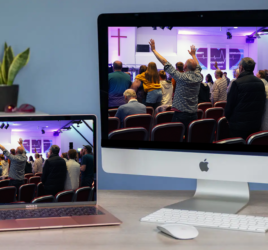In her book, The Thin Book of Appreciative Inquiry,[1] author Sue Hammond provides an excellent overview of the change philosophy developed by David Cooperrider and associates at Case Western Reserve University. Through this Thin Book publication, Hammond hopes to entice the reader to delve in deeper into the world of AI. Not only a student of Cooperrider, but also a practitioner has Hammond implemented Appreciative Inquiry (AI) over the past two decades as a change management consultant, notably with numerous Fortune 500 companies. The book is her “translation” of what she originally learned and has been edited and updated with new discoveries and resources.
Hammond first introduces AI briefly along with the eight assumptions AI makes about people, groups, change and the process. Then the 5-D Cycle is described, which is a circular and ongoing model which moves from Define to Discover to Dream to Design and finally to Deliver (or Destiny) before it starts over again. Each of the five steps is briefly described and current examples are given of case studies, questions and statements. To close, Hammond emphasizes that AI not only brings about measurable results, but also greatly improves how people feel in the process of delivering those results. AI has been known to increase productivity, energy and excitement due to the participative process and broad ownership in the newly created goals.
Appreciative Inquiry is a process that is focused on discovering what people or the organizations is doing well and helping them to do more of it. Opposed to problem-solving, which searches for what went wrong and attempts to fix it, AI searches for what went right and seeks to elevate it. Solving the mystery of why things went right helps to develop strategies for recreating it. It is a positive approach which creates energy and enthusiasm that leads to a renewed vision of a possible future based on actual facts and experiences. That is the strength of AI, since the resulting vision statements are not created by a small group of executives with grandiose dreams, but are derived from a process that involves all stakeholders and is rooted in real history.
Over the past 10 years I have heard about AI from various sources, but only from the non-profit sector and the community development context. Learning how it originally was developed to be applied in the private sector has given me a broader perspective of its usefulness. Cooperrider’s wife is an artist and was the one who brought the “appreciate eye” perspective to David’s work. As a graphic designer and an organizational leader myself, I can appreciate (no pun intended) how organizational change is a form of art. I intent to learn more about AI and would like to implement this in my church as we are starting the process of renewing our vision for the next five years. At the same time I will pursue how AI can be implemented by churches in Hanoi, Vietnam, in urban community development initiatives.
By Jacob Bloemberg
[1] Sue Annis Hammond, The Thin Book of Appreciative Inquiry (Bend, OR: Thin Book Publishing Co, 2013).




